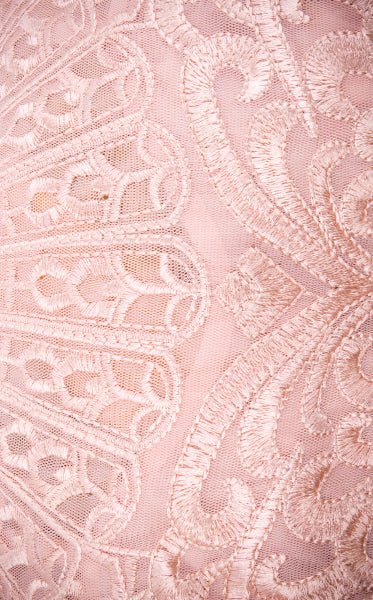Tulle is a lightweight fabric formed by a continuous network of round or polygonal meshes. Transparent and vaporous, tulle is made from cotton, wool, silk, linen or even synthetic fibers.
Tulle has an elastic texture: that's why it is measured in mesh rather meters. In this regard, we take into account the number of stitches present on a length of 25.4 mm (one inch). We speak then of points to indicate the number of stitches (tulle 10 points for example).
The use of tulle
Tulle is a decorative fabric, such as lace. It is used primarily in female fashion. It allows to give volume to clothes and is widely used in the creation of petticoats and in that of wedding dresses. It is then possible to embellish tulle fabrics with sequins, beads or diamonds.
The tulle is also used for the confection of household linen. The curtains on the stages are made of tulle. It is a fabric with regular openings and no seams on the part visible to the audience. They can only see the subject behind the tulle when it is lit.
Tulle types
Tulle comes in many, many varieties, including soft tulle. Easy to work with, soft tulle is an openwork fabric made up of a mesh network of polyester threads. As the name suggests, it is soft, but also very light and wispy like other types of tulle.
Soft tulle lends itself beautifully to dresses, tutus, costumes and show clothes. It is also used to decorate party venues and create curtains. This fabric is available in many other models:
- The tulle bobin or ordinary: its stitches are round or hexagonal and it is made vertically. It has a vertical warp thread around which two oblique weft threads are crossed and twisted;
- The net stitch tulle: its stitches are square. It can be considered the ancestor of tulle. The Egyptians of the ancient period made it by hand;
- The Brussels tulle: it is made up of square meshes, like those of the net stitch tulle, but they are much less wide;
- The Grenadine tulle: this type of particularly elastic tulle is made with an exceptional and luxurious silk thread that is only made in Italy. Its thinner and lighter polyester version is known as illusion tulle;
- The maline tulle : famous for its flower and plant motifs, it consists of hexagonal and elongated meshes;
The history of tulle
The Greeks, Romans and Egyptians were already using handmade bangs in net stitch since antiquity. However, tulle as we know it did not appear until the invention of the tulle loom in 1777 in England, with the objective of reproducing the characteristics of lace by means of a mechanical device.
This is probably why the first tulles were made with linen thread, before being embellished with embroidery and needlework. However, the result obtained was not very satisfactory, and manufacturers had to glue the threads to give an extra strength to the whole, with the consequence of losing flexibility of the mesh. It was not until 1808 that the tulle industry experienced a revolution with the invention of the bobbin loom by John Heathcoat.



